In 2004, Brooklyn’s Domino Sugar refinery complex shuttered its doors after more than a century in operation, heralding yet another deathblow to the formerly industrial Williamsburg waterfront. The main building—dubbed the Filter, Pan, and Finishing House and opened in 1882—loomed over the East River as a ghostly relic of bygone days. But now, after five years of design and construction, it is finally set to open its doors as The Refinery at Domino, an all-electric commercial office building featuring a dramatic vertical garden and myriad amenity spaces. The project is designed by Practice for Architecture and Urbanism (PAU) for developer Two Trees Management, and retains the structure’s distinct heavy masonry exterior walls, while inserting an entirely new 15-story glazed tower within the tight 250 by 70 foot confines of the historic brick shell.
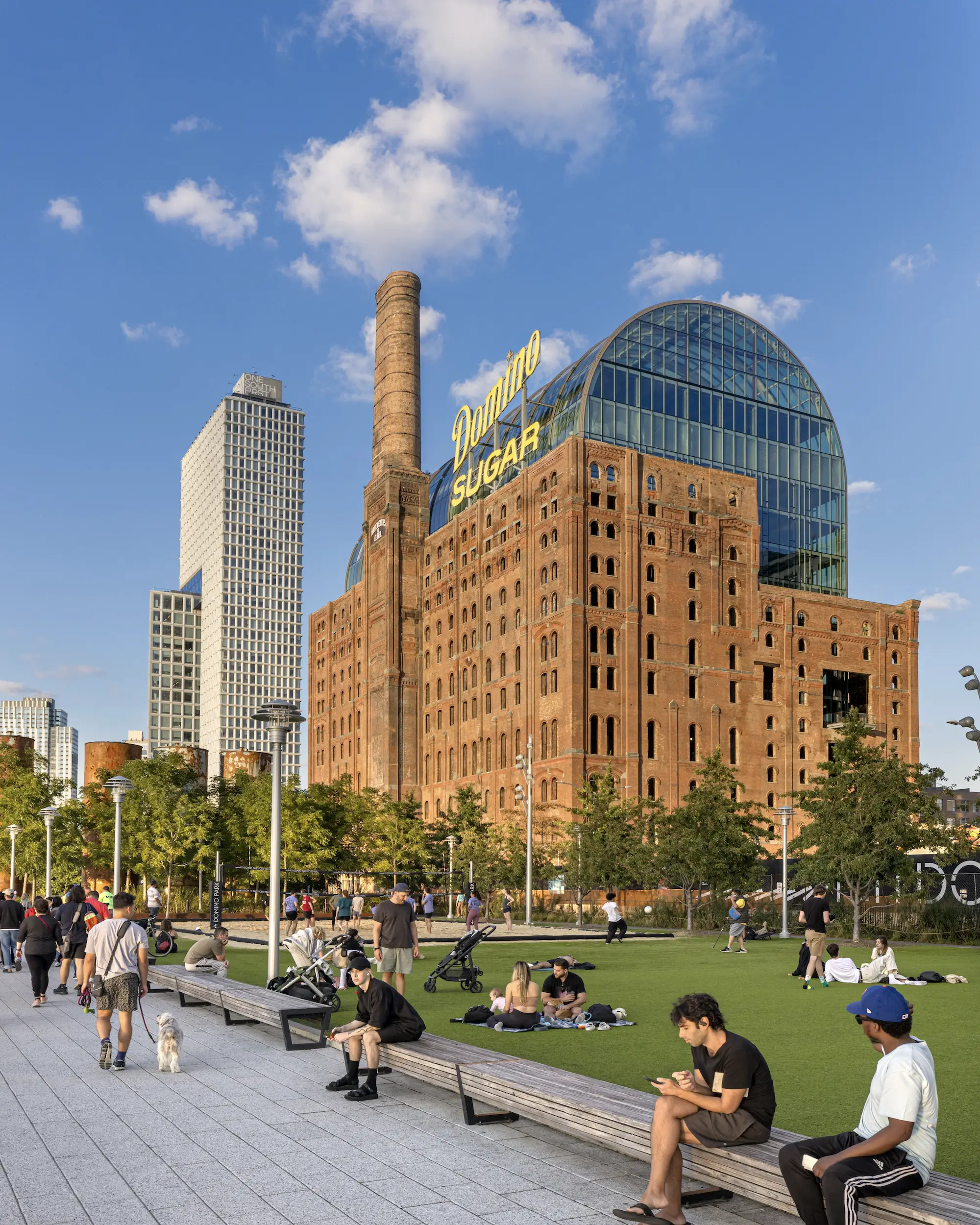
View of the Refinery at Domino from the Field Operations–designed Domino Park. Photo by Max Touhey
The 11-acre site is roughly bounded by the East River and Kent Avenue, to the west and east, and Grand Street and the Williamsburg Bridge, to the north and south. At its peak, the refinery housed 14 structures related to aspects of sugar production and transport and saw nearly 5,000 workers hum daily across the industrial campus. The property was acquired by Two Trees in 2012; that company has steadily built up this prime slice of riverfront real estate with mixed-use towers by SHoP Architects, which also led the Domino Sugar Master Plan, along with COOKFOX Architects and Selldorf Architects. The revived site also includes the lauded Field Operations–designed Domino Park, a concession extracted by the city from the developer to permit the area’s rezoning through the Uniform Land Use Review Procedure.
.webp)
Front view of the transformed 11-acre Domino Sugar Factory site in South Williamsburg. Photo by Max Touhey
As the Filter, Pan, and Finishing House’s name suggests, the hulking structure designed by a team led by Theodore Havemeyer (of the Havemeyer family that operated the refinery) enclosed three conjoined facilities, and, at a height of 155 feet was once the tallest building in Brooklyn. The factory’s gargantuan equipment was housed within their multistory spaces. Repetitive rows of punched arched windows across the four elevations, though misaligned, presented an orderly appearance that masked the confusing mess of machinery and differing levels within. While the facade was landmarked in 2007 and underwent intensive restoration, the remainder of the old sugar factory’s interior was not, and it made little practical sense to retain any of the existing structure or attempt to align new floor plates to the window openings. Instead, PAU opted for an approach that carefully gutted the internal structure, with massive steel braces keeping the now 141-year-old brick walls in check as construction of the office tower commenced within them.
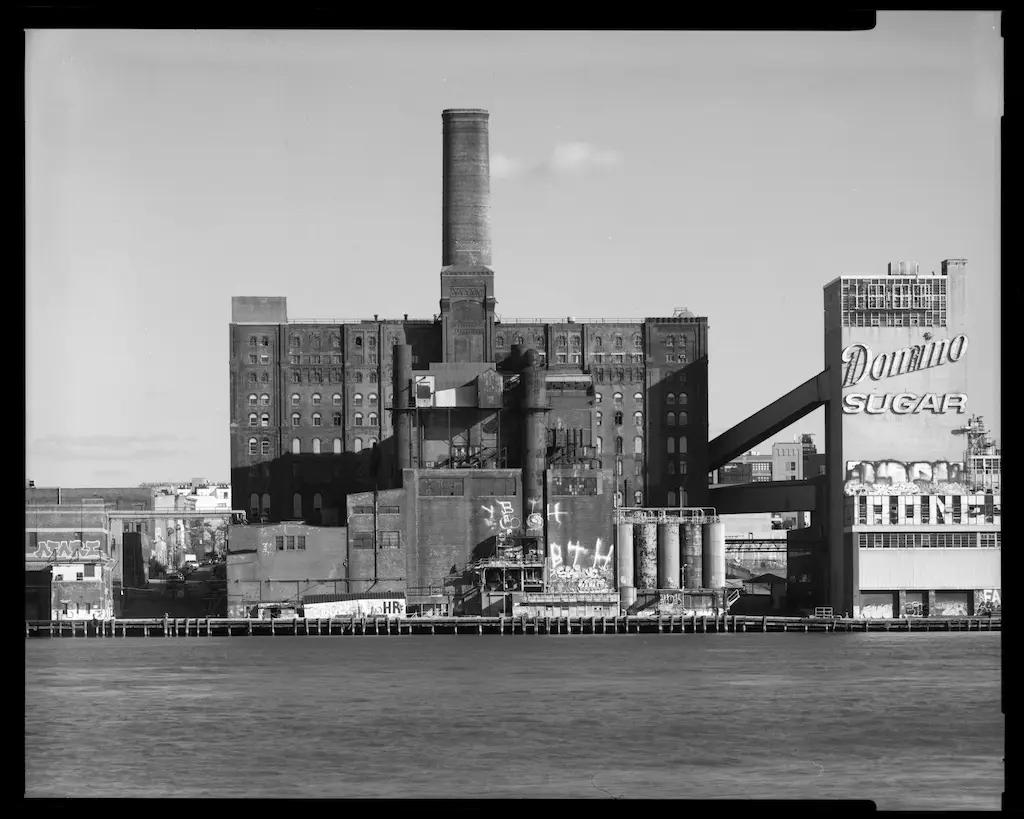
1
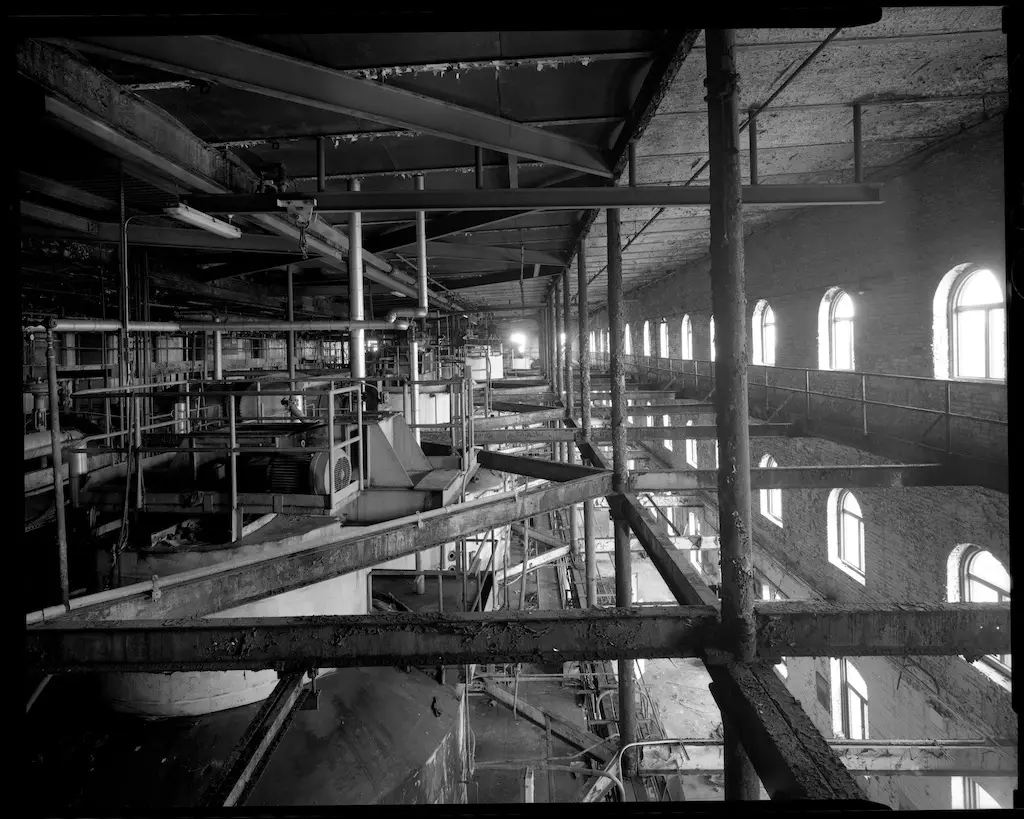
2
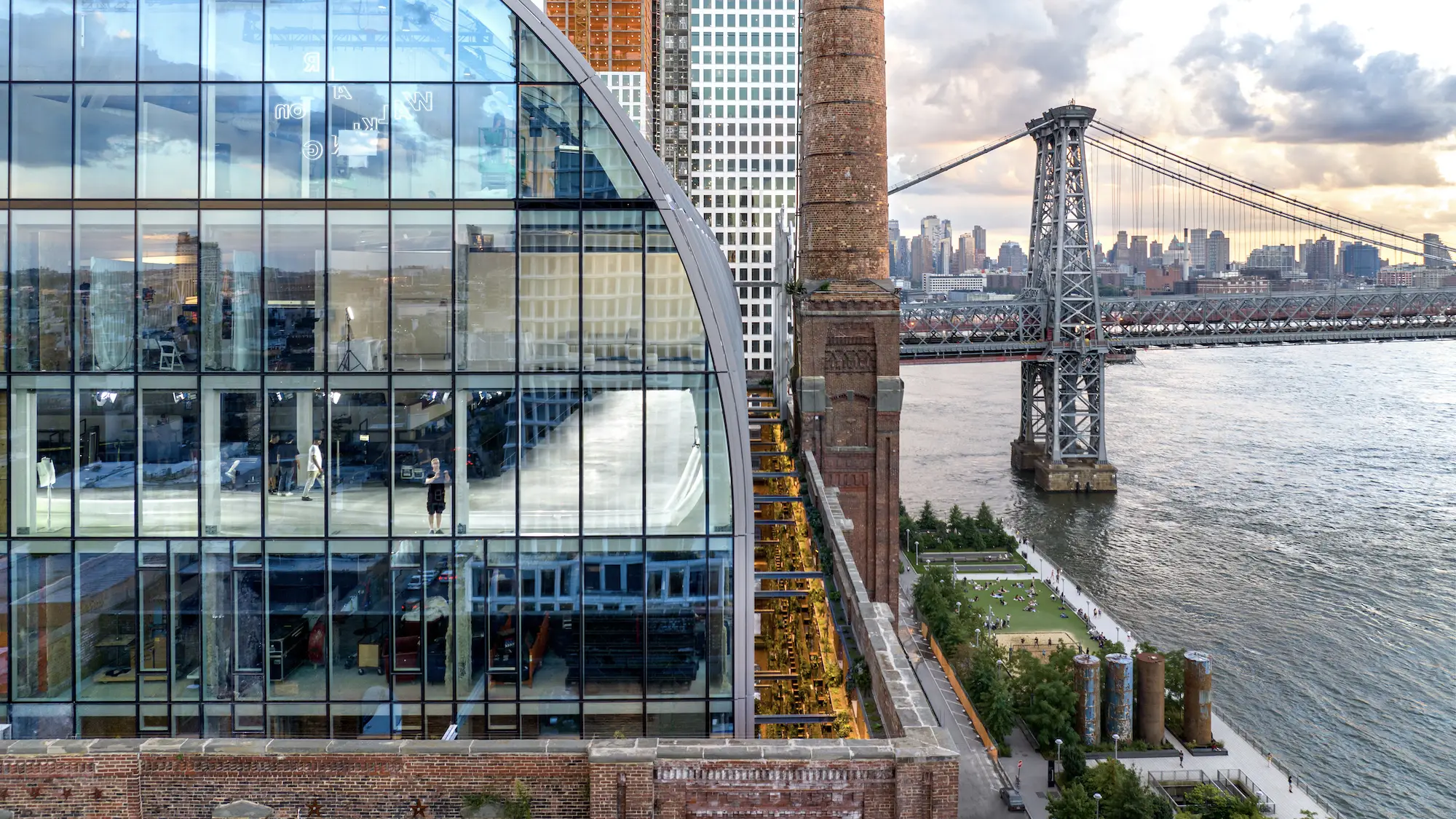
3
Historic photos of the exterior (1) and interior (2) of the 1882 Domino Sugar refinery building; view of the 12-foot opening between the new office tower and the historic masonry facade (3). Photos courtesy Two Trees Management (1,2); photo by Max Touhey (3).
According to PAU founder and creative director Vishaan Chakrabarti, the width of that gap between the masonry walls and new glass curtain wall, which ranges from 10 to 12 foot, results from a photon analysis of light penetration within that cavity. The analysis ensured sufficient daylighting for occupants on the lower floors, as well as the hanging gardens designed by Field Operations; they include myriad plantings as well as native pine and oak trees and American sweet gums. The brick masonry functions as a sort of brise soleil for the operable window-studded curtain wall, and owing to its thermal mass, helps to passively cool and heat the building’s interior, though a modern HVAC system will still do the heavy lifting.
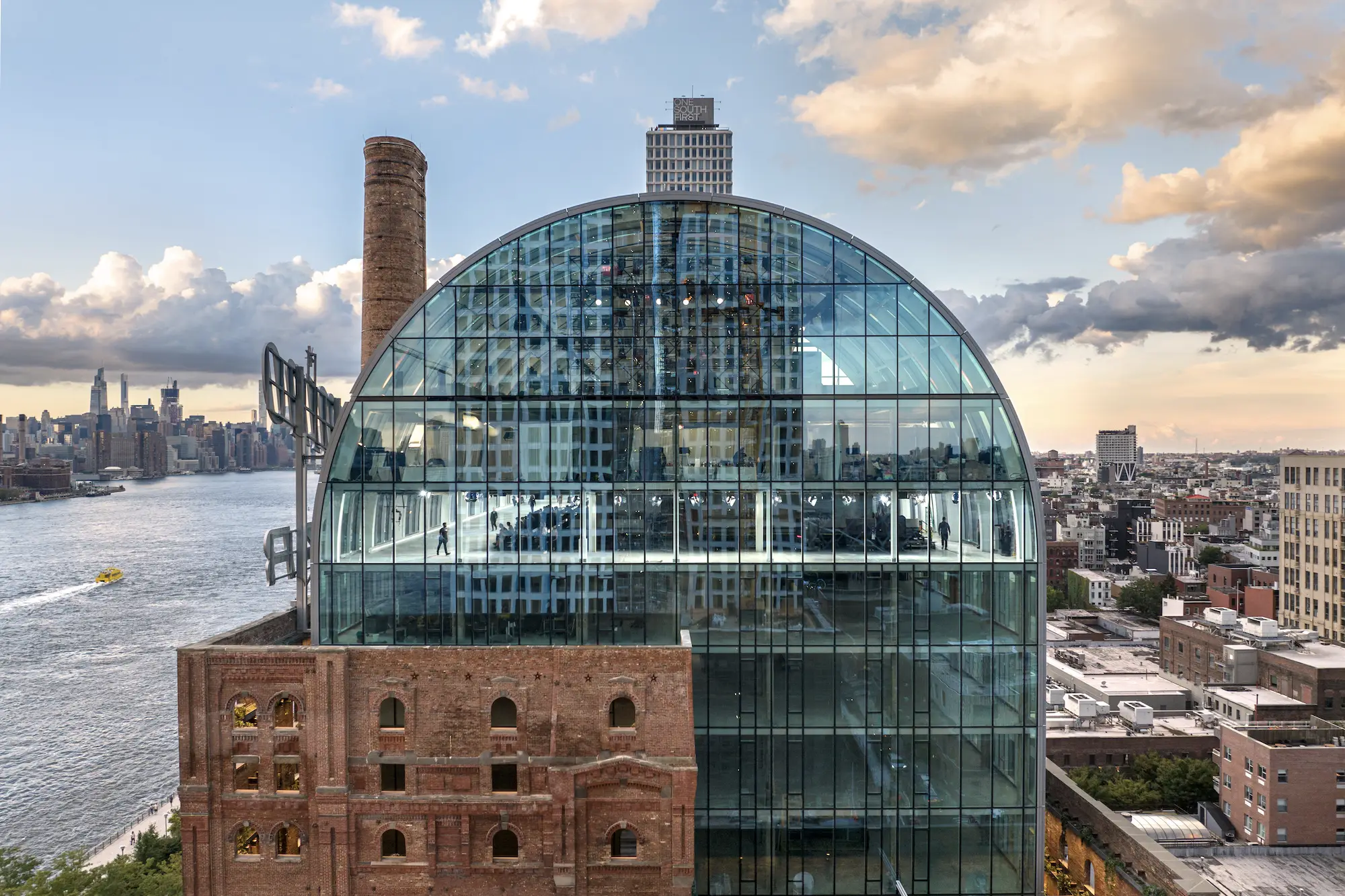
4
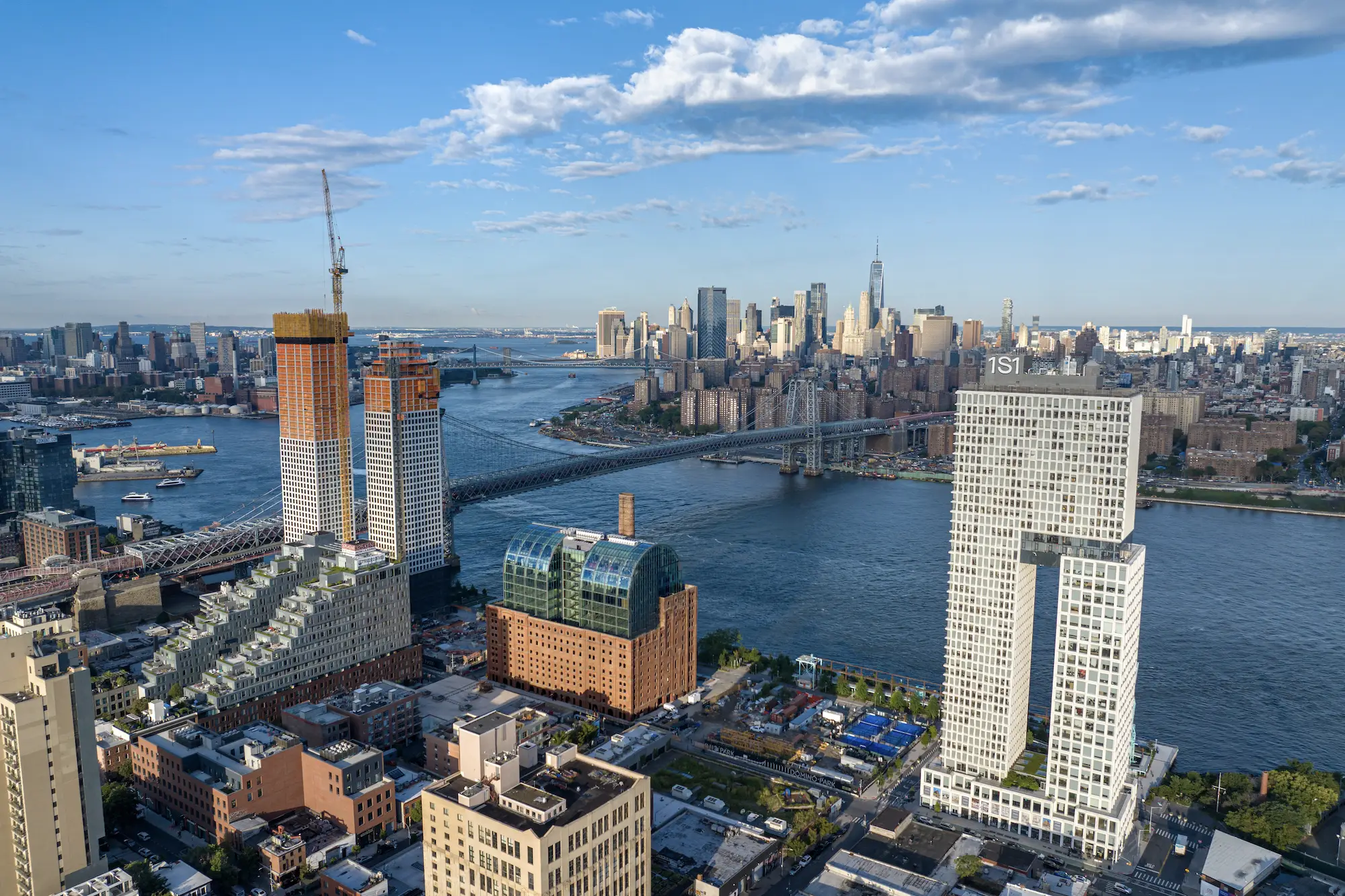
5
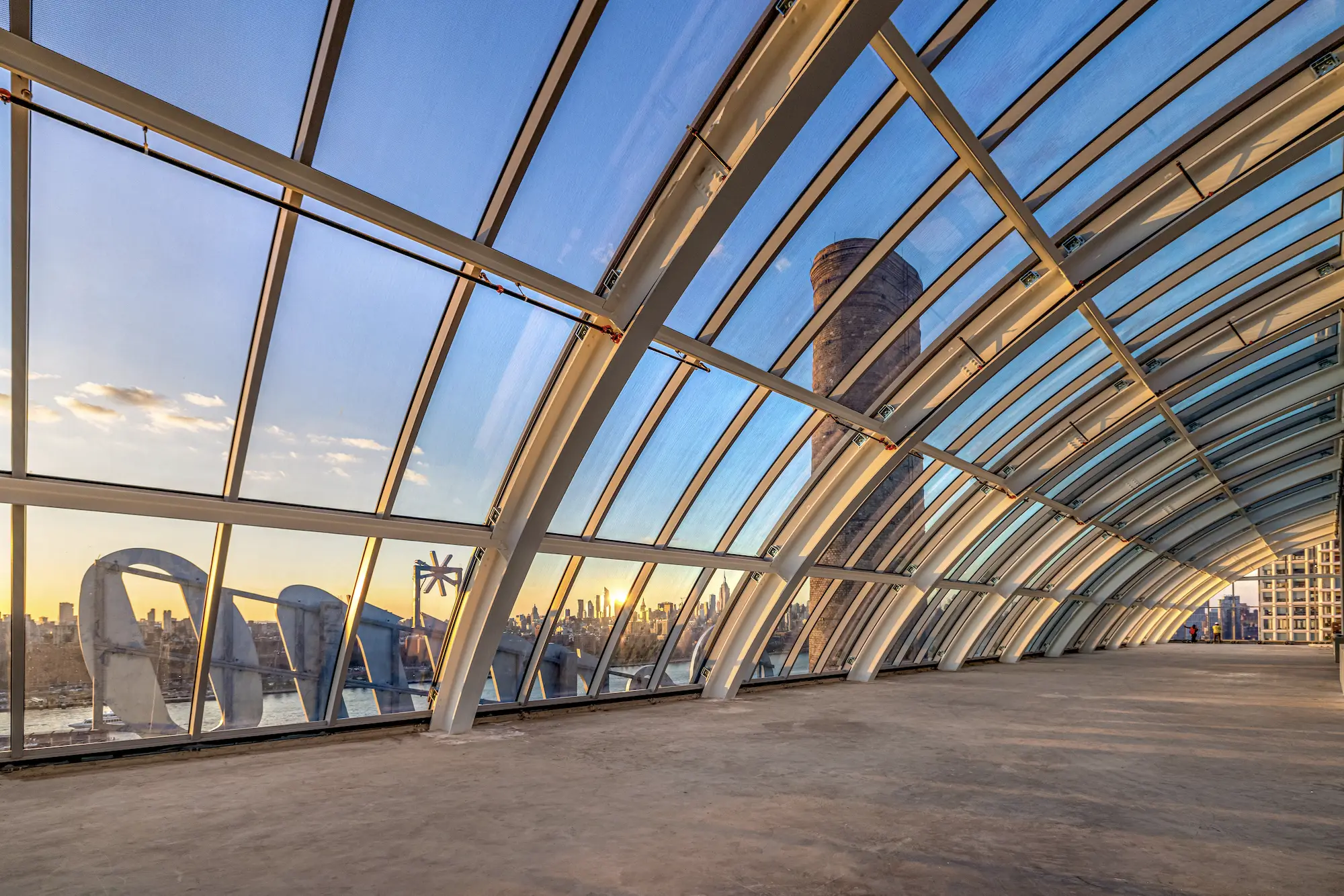
6
Southside profile of the Refinery at Domino (4); back view of the 11-acre Domino campus looking toward Manhattan, including Domino Park and the Refinery at Domino flanked by the Selldorf Architects-designed One Domino Square at left and COOKFOX's One Domino Square and One South First on the right (5); the penthouse at the Refinery at Domino (6). Photos by Max Touhey
The glazed tower emerges from the masonry pile as a distinct but complementary structure. At its summit, the curtain wall curves into a 30-foot-tall glass barrel vault, and it was PAU’s intent for that sweeping movement to reflect the Refinery’s American round-arch style.
Silman, the structural engineer for the project, devised a permanent steel framed superstructure—in lieu of more commonly used concrete shear walls—paired with a couple of cast-in-place concrete lateral cores, as the most appropriate means of navigating the site while ensuring the safety of the historic facade. Clear-spanning steel girders run from the perimeter columns of the steel superstructure to the building core to maximize unobstructed floor space. PAU principal Ruchika Modi notes that a “ring beam” circles the lightwell exterior of the masonry walls at multiple levels and reaches back through the curtain wall to the superstructure with a horizontal brace—this also required close collaboration with the curtain wall fabricator to avoid building performance issues related to thermal bridging.
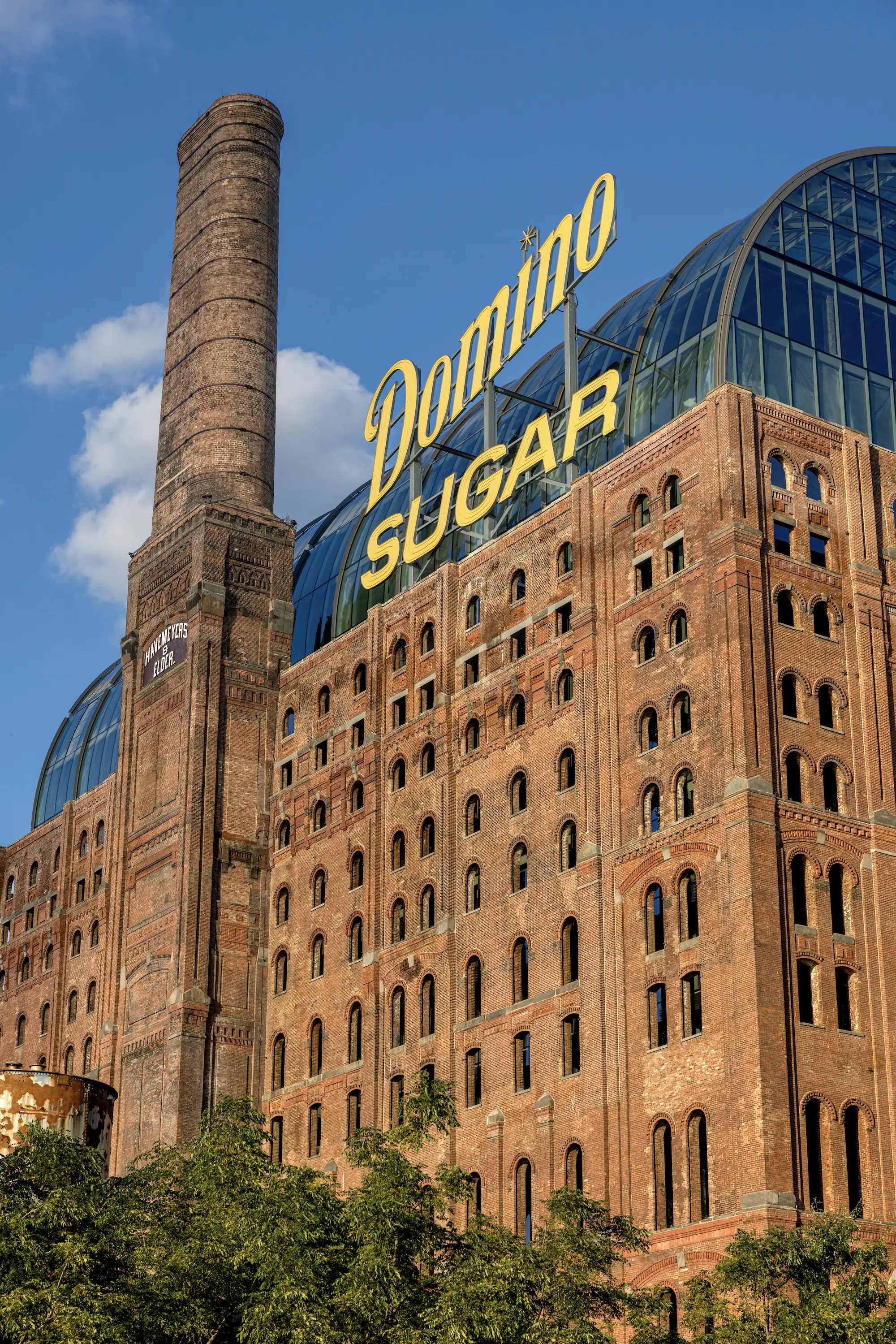
7
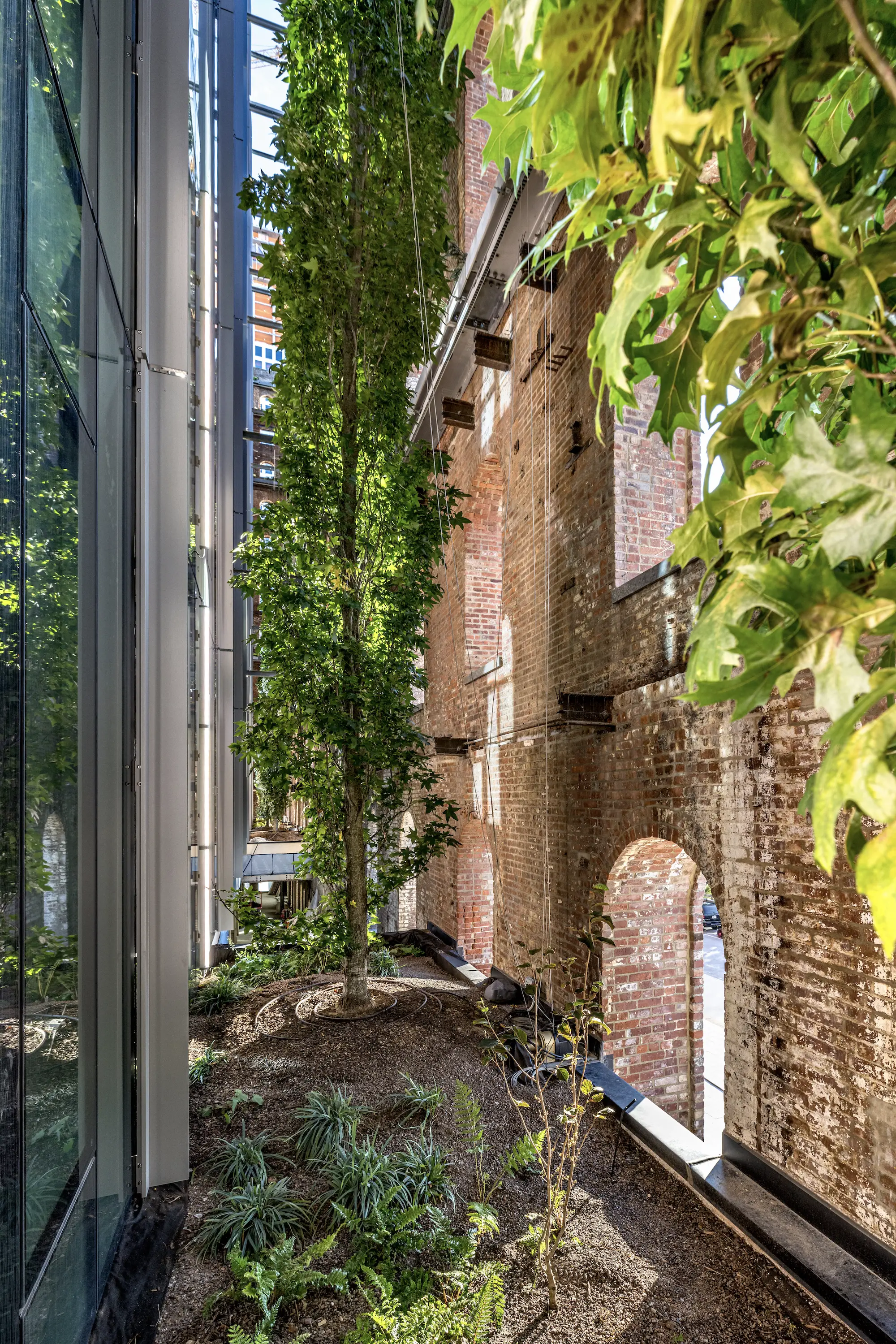
8
The Refinery at Domino as seen from Domino Park (7); vertical gardens by Field Operations (8). Photos by Max Touhey
The lobby and the first few floors of office spaces are designed by bonetti/kozerski architecture with a corporate feel. Though, as a speculative office tower, the bulk of the building will be built out by future tenants. Although the puritans of preservation politics may criticize the project as an act of facadism, and while the jury is out as to whether the market is there for 460,000-square-feet of office space, the Refinery is a clever reimagining of the Williamsburg waterfront, and a technical accomplishment to boot.
Video by Max Touhey
.jpg?1695929142)


Post a comment to this article
Report Abusive Comment